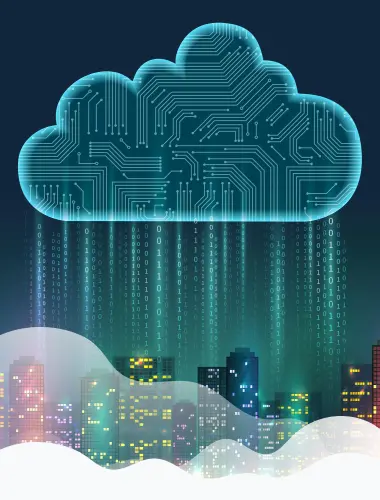Blogs
Data Center Interconnection (DCI)
Understanding Data Center Interconnect with DE-CIX India
When you hear the term Data Center Interconnection (DCI), the idea of connectivity is likely the first thing that comes to mind. Simply put, DCI enables the linking of data centers for smooth data exchange and communication. In today’s interconnected world, this connectivity is essential; without it, the conveniences we enjoy would simply not exist. Just think back to the era of jotting down phone numbers, relying on landlines, and spending hours in libraries to find information. The Internet has revolutionised our access to connectivity, becoming integral to our everyday lives.

What is Data Center Interconnect (DCI)?
Data Center Interconnect (DCI) is a service of connecting data centers enabling seamless communication and data transfer. In the era of cloud computing, big data, and digital transformation, DCI addresses the challenges posed by increasing data volumes and the need for robust disaster recovery and business continuity plans. DE-CIX India, a leading Interconnection Platform, is pivotal in facilitating DCI by providing a neutral and scalable interconnection platform for local and international networks.
The service employed in DCI are designed to ensure high-speed, secure, and reliable connections. Different methods can be implemented based on factors such as required data transfer speeds, security considerations, and the physical distance between data centers.
The primary objective of DCI is to enable efficient communication and data transfer between distributed data centers. Key objectives include:
How is DCI Used?
DCI services facilitate the seamless movement of content to, from, and between data centers, playing a critical role across various industries. In healthcare, DCI enable hospitals to address stringent business and clinical demands while preparing for future growth. In the fintech sector, DCI provides the robust networking infrastructure required by banks to manage traffic for digital products, including digital money transfers, real-time payments, and open banking via APIs.
Moreover, DCI is essential for enabling data sharing with third-party providers and financial exchanges, integral to a bank’s digital services ecosystem. As enterprises gradually migrate their IT resources to multi-tenant and public clouds, the demand for DCI connectivity from enterprise data centers and between cloud data centers is poised to grow in parallel with this trend.
The Importance of DCI for Businesses and Organisations
DCI is critically important for businesses and organisations, primarily because it ensures operational efficiency and reliability. Here are a few reasons why DCI is essential:
Example:
A telecom provider uses Data Center Interconnect (DCI) to link data centers, ensuring seamless traffic management during high-demand events like holidays or sports broadcasts. DCI also supports 5G rollout by integrating edge data centers with core networks, reducing latency and enhancing user experience while maintaining reliable, high-speed connectivity.
Conclusion
Data Center Interconnects (DCIs) are indispensable in ensuring reliable, high-performing, and seamless data center operations across industries. By facilitating smooth communication and workload distribution, DCIs enhance the efficiency of interconnected ecosystems. Their categorisation into intra-data center, campus, and metro interconnects highlights their adaptability to diverse communication needs, making them a cornerstone of modern data infrastructure.
The rise of edge data centers, driven by advancements in 5G, IoT, CDNs, SDNs, NFV, and AR/VR technologies, further underscores the evolution of DCIs. Positioned strategically at aggregation points, edge data centers provide low-latency computing resources, optimize bandwidth, and bridge the gap between raw data generation and traditional data center capacities. As organisations continue to navigate a data-intensive world, the synergy between DCIs and edge data centers remains critical in enabling efficient, scalable, and future-ready distributed computing ecosystems.
Subscribe to Newsletter
